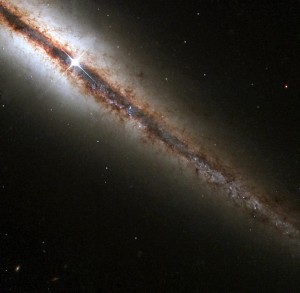Early last year, the scientific community was abuzz about a controversial result from the BICEP2 telescope in Antarctica: Researchers claimed to have detected gravitational waves. Such a result would have corroborated the popular theory of inflation, which describes what happened in the first million-billion-billion-billionth of a second after the Big Bang. However, the precision of the BICEP2 data was restricted by the telescope’s location — on Earth’s surface. Telescopes in space have much higher resolution than telescopes on Earth, where air causes light to scatter.

Indeed, the Planck satellite, launched in 2009 and orbiting almost 100,000 miles above the planet’s surface, has yielded data that contradicts the BICEP2 results. The Planck, which allows scientists to view the sky in greater detail than ever before, offers a less glamorous explanation for signal patterns — not gravitational waves, but cosmic dust.
Why would finding gravitational waves be so groundbreaking? The search is part of a race to verify the theory of inflation, which would resolve many current problems in astrophysics. First proposed by Alan Guthe and Andrei Linde in 1980, inflation hypothesizes that the universe went through a period of rapid expansion very early on in its formation. In million-billion-billion-billionth of a second, the universe grew to almost a billion billion billion times its original size, according to Guthe and Linde’s ideas. Such growth would have left observable scars, perhaps in the form of gravitational waves, or ripples in the fabric of space-time. These waves would have left a particular footprint on the oldest light in the sky, a special signal called the Cosmic Microwave Background (CMB). This signal is what was at the heart of the BICEP2 project.
Once a sea of light bouncing around in a hot hydrogen soup, the CMB has cooled down to just under 3 Kelvin in the past 13 billion years. Today, it is only detectable as radio waves. In theory, the primordial gravitational waves caused by inflation are encoded in the polarization states, or orientations, of the CMB radiation. BICEP2, Planck, and similar inflation-hunting experiments are searching for these CMB polarization states.
Researchers analyzing data from the Planck satellite are wary of confusing gravitational waves with cosmic dust. Interstellar dust is a problem for astronomers, as it blocks, dims, and distorts light traveling through it. The BICEP2 experiment looked at a region of the sky where models had predicted there to be little dust. But new models using improved data from the orbiting Planck have found more dust than was predicted. These models suggest that it is not gravitational waves, but rather interstellar dust from the Milky Way that caused the peculiarities in BICEP2’s results. In fact, there is enough dust in this particular portion of the sky that the perturbations in the CMB thought to be gravitational waves are not statistically significant. And so, the hunt for gravitational waves continues.
The next step for inflationary astrophysics is to see through the dust. Projects like the Planck mission are learning how to deal with sources of signal distortion, including dust and gravitational lensing. Other projects, such as the ongoing POLARBEAR experiment in Chile, are developing methods that are inherently less affected by dust. All inflation-hunting experiments are striving to lower the signal-to-noise ratio, which is the only way to get to statistically significant, reliable observations. The result from BICEP2 may have been a false alarm, but thanks to new Planck data, astrophysicists are one step closer to seeing through the cosmos to the beginning of time.
